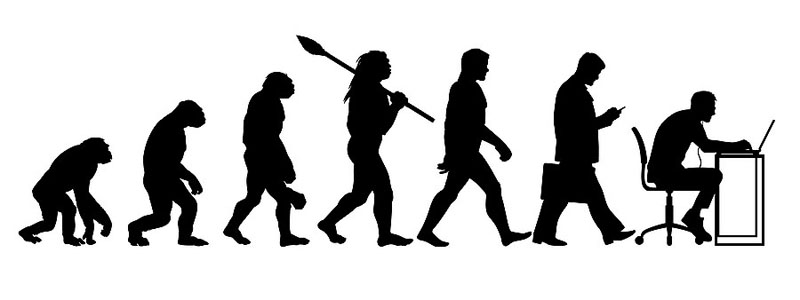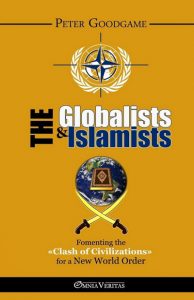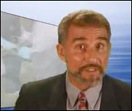A Summary of the History of the World, in Videos
PRE-COLUMBIAN AMERICAN HISTORY
by Edward Ulrich, updated February 18, 2022
The videos on this page detail pre-Columbian American history, including the period of first contact with Europeans. It is a part of the article “A Summary of the History of the World, in Videos”

Stefan Milo explains why he is skeptical about claims of bones being found in California that show signs of being butchered by Neanderthals. He explains that there is reason to believe that the bones could have been damaged by other means, no Neanderthal remains or tools have been found, and only a few hominids have left Africa at that time.

This video explains that it is most likely that Native Americans arrived in the Americas along the coast on boats sixteen thousand years ago, rather than by walking across the land bridge that existed at the time.

This video explains a recent discovery of a campsite alongside a river in Coopers Ferry, Idaho that is 16,000 years old, being the oldest definitive evidence of humans in North America. The site proves that native Americans were on the continent 2,000 years earlier than previously thought. The discovery shows that they arrived while ice sheets still covered the North American continent, which means that they almost certainly arrived by boat, and they arrived prior to the previously known “Clovis” peoples.

A 10,000 year old female human skeleton was discovered in an underwater cave of Chan Hol in the Yucatan Peninsula in Mexico. At that time the cave did not have water in it, and the eventual water preserved the original environment.

Stephan Milo explains the oldest known shoes in the world, which are 10,000 years old and were found in Oregon, USA. The shoes are made from intertwined cords of sagebrush bark, and they look well-designed and comfortable.

This video explains that a Bronze age did also exist in the Americas, where native Americans in Central America and South America also discovered the process of combining copper and tin when smelting metals to create bronze.

This video talks about North and South American dog breeds that were domesticated by native Americans.

This interesting 2002 BBC Documentary explains the recent discovery in Peru of Caral, the oldest known South American civilization that predates the Mayan sites in central America by at least a thousand years. It explains that there is no evidence of if being a war-like culture or them performing human sacrifices, but instead it was a prosperous trading hub where people brought fish to its inland location.
From the video page: “The magnificent ancient city of pyramids at Caral in Peru hit the headlines in 2001. The site is a thousand years older than the earliest known civilization in the Americas and, at 2,627 BC, is as old as the pyramids of Egypt. Many now believe it is the fabled missing link of archaeology - a ‘mother city’. If so, then these extraordinary findings could finally answer one of the great questions of archaeology: why did humans become civilized?”
From the video page: “The magnificent ancient city of pyramids at Caral in Peru hit the headlines in 2001. The site is a thousand years older than the earliest known civilization in the Americas and, at 2,627 BC, is as old as the pyramids of Egypt. Many now believe it is the fabled missing link of archaeology - a ‘mother city’. If so, then these extraordinary findings could finally answer one of the great questions of archaeology: why did humans become civilized?”

This video explains the Cahokia Mounds in present-day Cahokia, Illinois, which once had a population of 20,000 people, being the largest city in North America at the time.

This documentary explains the exploration of tens of thousands of mounds left behind by the people of Cahokia, an ancient city in North America.

This History Channel documentary explains that previously Mayan people in Mexico had migrated to what is now Georgia in the Southern U.S. and became the Creek Indians. Evidence is shown including the fact that they share the same architecture and cultural traditions, and as many as half of the words in the Creek language are based on the Mayan language. Mayan people vanished from their cities in Central America in 700 AD, and a Native American settlement was found in Georgia called “Track Root” that has 300 structures that are dated to 1000 AD, showing definitive connections to the Mexican Mayan culture, however the archeological community is attempting to conceal and suppress the truth about the Mayan origins of the site.

Choco Canyon in New Mexico is an abandoned Pueblo indian settlement that was made using rock in 1000 AD, which they abandoned a hundred years later. It is shown that the people who built the settlement had contact with the people who built the Mayan temples in Mexico since they consumed cocoa from a thousand miles away. Evidence from tree rings shows that they were driven from the site by years of drought and perhaps due to invasion, and also evidence exists of cannibalism being practiced at that time.

The Mesa Verde settlement is sophisticated cliff-side structures in southern Colorado that were inhabited between 1000 AD and 1500 AD. This older video does a good job of explaining the site and the people who lived there.

This documentary explains the evidence of the Pueblo Period in what is now the U.S., spanning from 1000 - 1500 AD, including the Chaco Canyon settlement in New Mexico, the Mesa Verde cliff-dwelling civilization in southern Colorado, the Grand Gulch settlement in Utah, as well as a network of roads in that region. Also explained is how it is shown that cannibalism happened at the end of that civilization, likely being due to war-like peoples coming from the south who were potentially precursors to the Mayans, and it is shown that the people in the area likely migrated south to the Arizona region due to the onset of a drought.

This Masaman video explains the origin and history of the Inuits, who have been living in the far north of the Arctic for thousands of years.

This is the first part of a well-made series about the Aztec world in the “Fall of Civilizations” documentaries. This episode explains the Aztec civilization at the point in time before it was first contacted by Europeans, recreating what the Aztec world looked like in great detail.

This is the second part of a well-made series about the Aztec world in the “Fall of Civilizations” documentaries. This episode focuses on the situation of Hernan Cortez and his Conquistadors initially making contact with the Aztecs, and the catastrophe that ensued.

This 2020 National Geographic documentary explains very recent discoveries in the Guatemalan Yucatan Peninsula showing that the Mayan societies were much more widespread than previously thought.

This History Channel documentary explains the technological achievements of the Mayan cities in present-day Guatemala, which were ultimately abandoned 1000 years ago.

This French documentary explains the rise and fall of a vast network of large ancient Mayan cities, being located in Guatemala with the first city being built in 600 BC, and with all of them being abandoned in the region 1000 years ago.

This History Channel documentary explains many aspects of the structures created by the Aztec culture in present-day Mexico.

This excellent movie created by Mel Gibson presents a very convincing portrayal of the Mayan culture. Also see a video explaining the making of the movie.

This interesting video summarizes many of the theories of recent peoples finding the Americas before Christopher Columbus, such as the Vikings, the Romans, the Irish, Africans, and Polynesians.

This movie by Ridley Scott portraits Christopher Columbus discovering America and his initially settling on the island of Hispaniola. Also see a compilation of scenes from the movie.

This 2007 History Channel documentary details the fourth and final Voyage of Christopher Columbus to the Americas, where he explored the coast of Central America and was marooned on a Caribbean Island for many months.

This National Geographic video summarizes the Machu Picchu archaeological site that is located on a mountaintop in Peru.

This History Channel documentary explains the amazing mountaintop Machu Pichu settlement in Peru, that was built as a palace for the Incan king Paccu Kutti in the 1400’s.

This documentary details how Francisco Pizarro subjugated the Incan Empire on the western coast of South America in the 1500’s.

This video explains that much history of the Incas is not known due to them not having a written language, with only a few post-Columbian accounts being written down that were based their oral history at that time. It explains that the city of Cuzco was initially built by the Incas, with the Spanish often simply just adding to the already existing building foundations. The Inca empire spanned 2,500 miles along the Pacific coast from present-day Columbia to Chile, where it ruled as many as 12 million people. The video explains how the Spanish had an agenda of erasing Inca culture, which further obscured their history. Several mixed-race Incas such as Blas Valera and Inca Garcilaso de la Vega wrote accounts at the time based on their oral history.

This video explains the Incan Emperor Pachacuti (“The Earth Shaker”), who was able to successfully defend the city of Cusco from enemy attack in 1418, with him then forging Cusco into an Empire with the state taking its tax in labor rather than using money, where peasants were drafted as laborers. Pachacuti was able to consolidate all of the previously independent kingdoms in the region through diplomacy and warfare. Some of the practices of Pachacuti are explained, including his brutally killing generals who were successful in battles due to his being worried about his position as leader being taken by them.

This video explains interesting aspects of the Incan culture, such as the fact that they kept records by using strings with knots tied in them and the fact that the society was governed in units of “ten”— where groups of ten people were subdivided into groups of ten groups, with those groups being further subdivided in such a manner. The Incas practiced human sacrifice with willing subjects, and they mummified their leaders who they continued to bring to meetings as corpses. The video then explains the complicated rules for succession that the leaders used.

This video explains that once the Spanish arrived in the Americas, epidemics of Smallpox ravaged the Incan societies, killing as many as 90% of them including the direct successors for the royal families, causing more obscure members to compete for the throne in vicious and costly civil wars that further ripped the empire apart. The video also explains how the Conquistadors came to the Americas under the premise of “Christianizing” it, but they also came to become wealthy.

This video explains the complicated political situations that existed once the Conquistadors subjugated the Incas, where they took the leader of the Incas hostage, but rival Inca factions initially perceived the situation as being helpful for their own interests. The Conquistadors also broke into factions over disagreements over how their looted gold was to be distributed among themselves. Eventually the Conquistadors killed the Incan king, but it resulted in mass unrest, where 20 - 30 rebellions ensued within the first few decades of the Spanish rule. The Spanish undertook an aggressive policy of destroying Incan culture through forced conversion and cultural destruction, and eventually the Conquistadors fought battles among themselves to determine who would rule the area, with Pizarro ultimately being killed by Spanish attackers at his home in Lima, Peru.

This movie portraits the true story of the journey of the Norwegian adventurer Thor Heyerdahl from South America to Polynesia in 1947, where he traveled across the Pacific Ocean on only a simple raft in order to prove that South American people could have reached Polynesia in pre-Columbian times. [Note that in 1969 and 1970 he also made a similar type of journey from Africa to South America.] Watch a trailer for the movie.

This documentary explains Captain Cook finding the Hawaiian Islands in 1778, where he was eventually killed by Polynesian warriors who lived on the island after battling with them.
<< previous section | next section >>
Article Tree
| A Summary of the History of the World, in Videos |
| PRE-COLUMBIAN AMERICAN HISTORY |






















